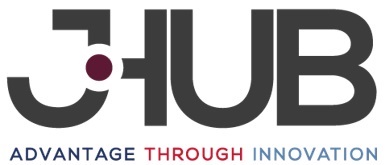About us
We are Cyber & Specialist Operations Command’s innovation team, connecting world-class technology and talent with users across Defence.
Our team
We are a diverse team of military, civilian and contractor staff, based in in Central London. We engage with ‘end users’ in Cyber & Specialist Operations Command and across Defence to understand their problems and challenges. Through our network of innovation scouts, we also build relationships and unearth the most exciting and fast-moving technology and innovative solutions available to Defence.
Whichever side of the model a project begins, we effectively act as a brokerage between problem and solution, managing the process to unlock new capabilities and value. Our wider team of experts across commercial, financial, security and integration ensure that we get the solutions into users’ hands in rapid order and with a good chance of converting a successful pilot into a sustained capability.
Our aim
Our aim is to deliver competitive advantage against the UK’s adversaries by unlocking novel and disruptive capabilities, through an opportunity-led and user-centred approach – with a particular focus on harnessing leading dual-purpose technology. We also aim to pioneer and champion methods that enable Defence to be “innovative by instinct”.
We are focussed on mature solutions that can deliver impact at pace. We have a particular interest in repurposing high Technology Readiness Level (TRL) products and services from areas that do not traditionally have a Defence focus, to provide software, hardware, or to solve a process or people issue.
How we do business with industry
Our approach to doing business with industry varies depending on the type of project, and the nature of the problem/requirement. We take a portfolio approach, running different types of innovation projects:
- problem-led projects (our majority focus), where we start with a current end-user problem and scout for the best available solutions (whilst seeking to tackle any wider obstacles to exploiting/scaling, such as accreditation, policy, training requirements etc);
- thematic priority-led projects, where the organisation is trying to change in a particular direction, or grapple with an anticipated future need;
- technology opportunity-led projects, where we find a capability from industry that we believe could be highly impactful if repurposed for Defence – then seek user traction to exploit.
For problem-led projects and thematic priority-led projects we will work with an end-user to refine the requirement sufficiently. Once refined we identify the most suitable route to market for a solution: one which is compliant with our procurement regulations and ensures best value for money for the taxpayer. This could include utilising existing routes to market such as the Crown Commercial Services (CCS) frameworks, running an Open/Restricted Competition through the Find a Tender Service or, where there is a robust justification to do so, taking a single source approach.
We have the flexibility, and resource, to take a bespoke approach to each innovation project to ensure we are harnessing world-class technology and deriving maximum value for money for the taxpayer.
For technology opportunity-led projects, our innovation scouts seek to proactively engage widely with industry – with a bias towards the technology sector, looking for dual-purpose technology with significant opportunity for Defence. We also engage through the various Defence and technology events, with venture capital investors, accelerators, and others to scout for opportunities.
We are not resourced or mandated to run a ‘front door’ to triage approaches from industry at scale – although we do have a close relationship with DASA, who help us to horizon scan for unseen opportunities (they are focused on mid-TRL tech, whereas we are focused typically on re-purposing high-TRL tech).
Our model
The jHub takes a traditional funnel approach, using a 4-stage process:
Rapid evaluation
Identifies whether there is a good match between user problem and supplier solution. This process culminates in an internal pitch to the team using a mission model canvas.
If deemed to be a good fit for the jHub model and priorities, with a promising value proposition, additional internal resource will be allocated to progressing the project (commercial, finance, security, integration etc).
Opportunity assessment
Assesses whether there is sufficient user desirability, technical feasibility and business viability to take the product into the next stage (Pilot). A series of questions is used as a framework and an internal jHub panel will assess each opportunity assessment before progressing to the next step, with a non-executive director assuring the process.
If successful at the opportunity assessment panel, a project is immediately funded with no further delays / approval loops (if within delegated authority limits); the jHub has the empowerment and delegated authority to enable it to seize high risk – high reward opportunities, taking more risk than the wider MOD typically would.
Pilot
Pilots typically take from 1 month to 6 months, depending on the product. Each pilot aims to provide tangible quantitative and qualitative evidence to support future Defence procurement decisions without expending unnecessary resources. jHub is intrinsic in facilitating collaboration between suppliers and end-users. Pilots are often iterative in nature which allows suppliers to rapidly modify their products to best meet Defence needs.
